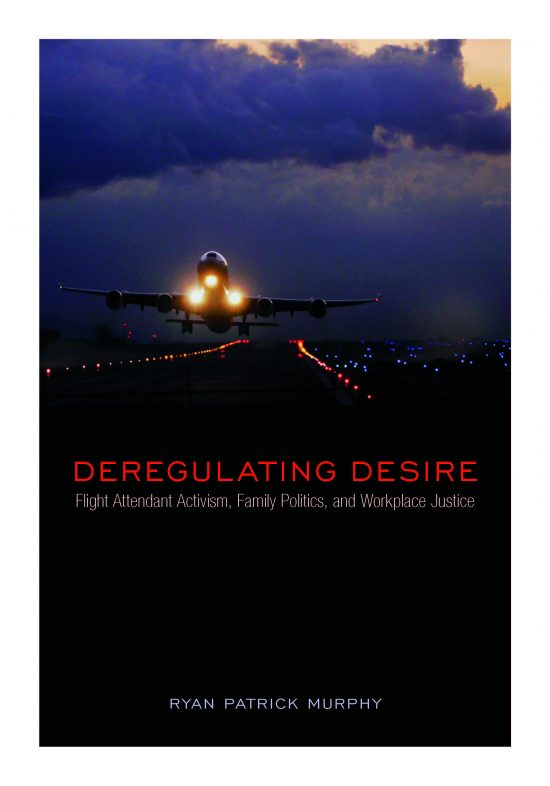On August 12th, 2016, union activists at United Airlines scored a rare victory for working people. Based in the United States, the company’s 25,000 flight attendants ratified a new contract that delivered flexible new work schedules and a top wage of over $67,000 per year. Although the agreement delivered a substantive advance to all flight attendants and their kin, labor negotiators designed the deal to address the specific economic needs of workers who live outside of the heteropatriarchal nuclear family: people who live alone, cohabitate with friends or lovers, have children while single, are in same-sex relationships, or are unable to depend on the financial support of a traditional husband breadwinner. For example, the contract allows flight attendants to swap trips with coworkers at the last minute, which enables them to leave work without fear of discipline when kids get sick or when childcare falls through. They can earn up to $100 an hour in overtime pay when the company is understaffed, which helps flight attendants increase their pay and avoid the cycle of credit card debt. All trips guarantee at least eight hours of rest in a hotel room between shifts, which is a precious resource for mothers who face sleep deprivation as they balance family and work. With the signing of the new accord, every flight attendant has the opportunity to spend more time with friends and family, or to maximize income to be a better provider for their dependents. The deal is thus a step forward for traditional nuclear families and queer kinship networks alike.

Flight attendants for United and other large airlines are making these gains because their unions have been hotbeds of feminist and LGBTQ activism for fifty years. By the mid-1960s, a new generation of workplace leaders was challenging management policies that required most flight attendants – or stewardesses as many companies called them at the time – to be young, attractive, sexually available white women. Corporate executives aimed to monetize the sexual revolution by requiring stewardesses to wear revealing new uniforms, by forcing stewardesses to “retire” at thirty years old, by firing stewardesses who got married, and by grounding stewardesses who got pregnant. Stewardesses at Trans World Airlines (TWA), for example, wore skimpy togas made of paper on flights to Greece, while those at Pacific Southwest Airlines (PSA) donned thigh-high black boots and impossibly tight, short, hot pink miniskirts. Mobilizing against exploitative marketing and managerial practices, front-line stewardesses filed grievances through their unions, picketed at major airports, sued their employers, and took their case all the way to the U.S. Supreme Court, which forced the airlines to cease their most blatantly sexist tactics in 1971.
Rather than quelling unrest among stewardesses, the watershed legal advances of the early 1970s emboldened them. In 1973, activists formed the Stewardesses for Women’s Rights (SFWR), a coalition of workers from multiple airlines that built a bridge between stewardess unions and the women’s liberation movement. New political infrastructure inspired increasingly bold action in the workplace. In one vivid instance, TWA stewardess and SFWR leader Paula Mariedaughter was kicked off a TWA flight in St. Louis after she refused a captain’s order to apply lipstick prior to departure. Inspired by women’s liberation, Mariedaughter – who once modeled for TWA advertisements that ran in the New York Times – had recently come out as a lesbian, and had stopped wearing the up-dos and the makeup that TWA required. Feminist union leaders rushed to Mariedaughter’s defense when the overtly sexist captain refused to relent on the corporate makeup policy, and subsequently forced TWA to return her to work with full back pay. Shortly thereafter, American Airlines stewardess and SFWR activist Patt Gibbs became the first out lesbian elected to the presidency of a stewardess union in 1977. By that time, activists were renaming their profession, rejecting management’s use of the ideology of femininity to devalue their labor, and embracing the gender-neutral term flight attendant.
Despite activist victories like Mariedaughter’s and Gibbs’, flight attendants remained the lowest paid employee group at most airlines in the mid-1970s. Managers at some carriers paid flight attendants 20% less than men in comparably skilled trades such as customer service and baggage handling, arguing that husbands should be the breadwinners for flight attendants’ families. Rejecting that assumption, activists turned their attention to closing the gender pay gap, and to winning double-digit annual pay increases that would allow flight attendants to provide for whoever they chose as kin. After managers refused those demands, workplace leaders launched a direct action union campaign against the airlines. Flight attendants for American Airlines declined two lucrative contract offers in a row from the company in 1975, and prepared to strike if a better deal failed to materialize. At TWA, flight attendants came within hours of a walkout during the Bicentennial Celebration in New York in July 1976, and then again on the eve of the Republican National Convention in Kansas City in August. National Airlines flight attendants struck the company for 127 days during the fall of 1975, and those at Pan Am shuttered the global airline in April 1979. Flight attendants won lucrative resources in all of these strikes. At TWA, for example, real wages rose 85% in the decade after 1973.
Activists’ political commitments gained new urgency as the AIDS crisis upended the lives of all flight attendants, and especially of gay men in the 1980s. Pan Am, TWA, Northwest, and other international carriers had hired men as cabin service directors on long haul flights since the 1930s, but because of enduring anxiety about the masculinity of any man willing to perform work deemed to be servile, most airlines had refused to hire men for regular flight attendant positions. Thus, less than 5% of flight attendants were men in 1970. With the rise of the gay liberation movement in the 1970s, however, a new generation of young men began to challenge the scorn on men in feminized jobs, and claimed gay identity in the workplace. Many of the new men came to the airline industry from gay liberationist enclaves in New York, Los Angeles, and San Francisco, and because the HIV/AIDS epidemic heavily affected those spaces, gay flight attendants were hard hit. Flight attendant unions quickly became a survival resource for gay men, both because contracts protect workers from arbitrary, discriminatory termination, and because they guaranteed the paid sick leave and emergency time off that flight attendants needed to care for friends in their darkest hours. Gay men in the airline industry were often single, and could not always count on parents, siblings, or partners for help as they suffered from a heavily stigmatized illness. As the AIDS crisis highlighted the importance of relationships that were committed but not legally recognized, activists pushed to broaden family benefits eligibility to include flight attendants’ unmarried partners. After a two-year campaign of civil disobedience and direct action at United Airlines, activists made these “domestic partner benefits” industry standard in 1999.
Previous feminist and LGBTQ struggles illuminate the historic importance of recent victories like last summer’s contract win at United Airlines. In an era of passionate political debate about declining real wages and rising income inequality, policymakers often argue that restoring manufacturing jobs is the key to reversing such trends. The problem for today’s workforce is that the living wage, health insurance, and secure retirement that came with manufacturing work were disproportionately reserved for white men who were presumed to be the sole breadwinner for their families. At United, however, 80% of the beneficiaries of the new contract are women, over half of workers are single, and half of all new positions go to people of color. Flight attendants’ economic advances provide a model for delivering a living wage and dignified working conditions for a labor force defined by its racial, gender, and sexual complexity rather than by its homogeneity. Instead of looking backwards, flight attendant unions have always looked forward, pushing to make the economy work for their members who married, domesticated, and moved to the suburbs, and for the many feminist and queer flight attendants who have departed from conventional domesticity.
 Ryan Patrick Murphy is an Assistant Professor of History at Earlham College with a particular interest in U.S. history, labor history and queer studies. A former flight attendant, he is the author of Deregulating Desire: Flight Attendant Activism and the Family Values Economy (2016, Philadelphia: Temple University Press).
Ryan Patrick Murphy is an Assistant Professor of History at Earlham College with a particular interest in U.S. history, labor history and queer studies. A former flight attendant, he is the author of Deregulating Desire: Flight Attendant Activism and the Family Values Economy (2016, Philadelphia: Temple University Press).

NOTCHES: (re)marks on the history of sexuality is licensed under a Creative Commons Attribution-NonCommercial-NoDerivatives 4.0 International License.
Based on a work at www.notchesblog.com.
For permission to publish any NOTCHES post in whole or in part please contact the editors at NotchesBlog@gmail.com





Thank you!
This is *so good* to read! I vividly remember the increasingly inappropriate uniforms the “stews” had to wear. I hope the unions also cover flight attendants on charter and other private flights — presidential campaign flights, wealthy people who want to avoid TSA hassles, etc. I hope more workers get the strong unions all deserve.